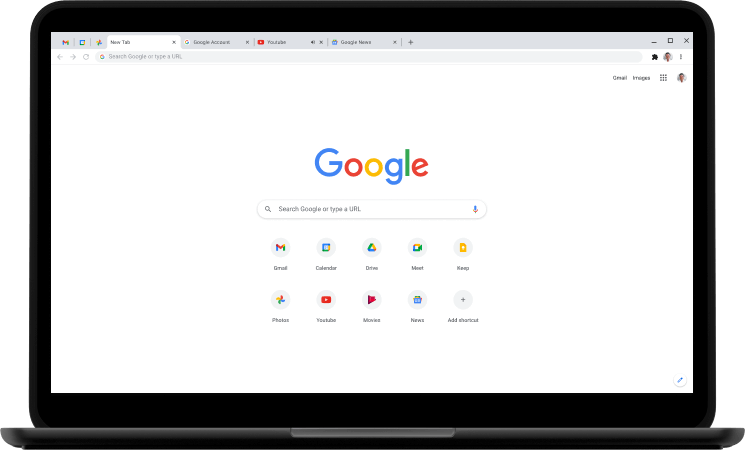

- #OPEN TO A WEBSITE CHROME FOR MAC HOW TO#
- #OPEN TO A WEBSITE CHROME FOR MAC FULL#
- #OPEN TO A WEBSITE CHROME FOR MAC MAC#
There are also some deep-seated potential issues with the one-party nature of FLoC, being managed by Google and deployed on its dominance browser. There are way too many potential issues as FLoC combines with others tracking and finger-printing techniques to be comfortable with this any time soon. The privacy lobby is aghast at this concept. This will set it even further apart from Apple, as the nuances of algorithmically categorized users being identified by common browsing links become apparent.
#OPEN TO A WEBSITE CHROME FOR MAC FULL#
Privacy Labels - Chrome Vs Rivals Apple / battle of the browsers is about to heat up significantly as Chrome progresses its FLoC trail and then moves to a full deployment. Given Safari is the stock browser on every Apple device, there really is no excuse to use Chrome. And you can see the difference in the data harvested by each by comparing their privacy labels. So, whether normal browsing or private browsing, Safari has clear benefits over Chrome. Safari treats cookies more carefully than Chrome.” “Not only does Safari block third-party cookies by default,” Mysk and Haj Bakry explain, “it also deletes first-party cookies for web sites that haven't been visited within seven days. Given Google’s business model, it’s not really a surprise that Chrome does not do the same. Safari blocks these third-party cookies by default in its normal mode. But there’s a difference between these friendly “remember me” cookies and the dreaded third-party cookies that track you from website to website, reporting on your behaviors to ad agencies and data giants. If you use Safari, you can browse in normal mode, being remembered as you return to sites, logging in automatically as you do. It turns out they haven’t-advertisers can still freely track users across websites in Chrome by default.” A year later, we checked if Google had made any changes in Chrome’s third-party cookie policy. “In early 2020,” Mysk and Haj Bakry explain, “Google announced a plan to gradually block third-party cookies in Chrome within two years. Privacy isn’t a marketing concept-it’s a philosophy that underpins the way technology is designed. Watching this video, you can see exactly where the different philosophies come into play. Mysk and Haj Bakry have provided a second video showing how Chrome and Safari handle third-party tracking cookies out of the box in their normal browsing modes. And so, for most of us, constant private browsing is too much like hard work.Īnd this gives you even more reason to ditch Chrome for Safari. But any such browsing has drawbacks and can be painful-not being remembered as you revisit sites, logging in each time. Safari’s private browsing is genuinely private. Other browsers operate the same way, but “this won't happen in Safari, as it provides a separate session for each private window and tab.” This isn’t as bad as direct tracking in normal browsing, “but if the user has logged in, a service can associate reference information in the link with their account. “While third-party cookies are blocked by default in Incognito mode,” they warn, “third-party iframes such as Twitter and Facebook embeds, can under certain conditions still track users.”

Click a website to open it.Security researchers Tommy Mysk and Talal Haj Bakry ( ), the duo that exposed Apple’s clipboard issue, have pulled together a video showing how these private session leaks create privacy breaches. You will see tabs from all your other devices here.
#OPEN TO A WEBSITE CHROME FOR MAC MAC#
To use this from your Mac app, open the Chrome browser and click the “Menu” button. If you use the “Open Tabs” feature in Chrome’s History section, you can open tabs from your iPhone or iPad without touching them. Transferring tabs is great if you have both devices open and running the Chrome app.
#OPEN TO A WEBSITE CHROME FOR MAC HOW TO#
How to Open Chrome Tabs from Other Apple Devices Tap the “Open” button to open the website in a new page.

If you sent the tab to your iPad, you’ll see a “Tab Received” banner in the Chrome app. If you click the notification, it will open the website in a new tab. If you sent the tab to your Mac, you’ll see a notification about it. Choose your device, scroll down, and tap the “Send To Your Device” option. Here, choose the “Send To Your Devices” option. Open the website you want to transfer to another device and tap the “Share” button from the URL bar.


 0 kommentar(er)
0 kommentar(er)
